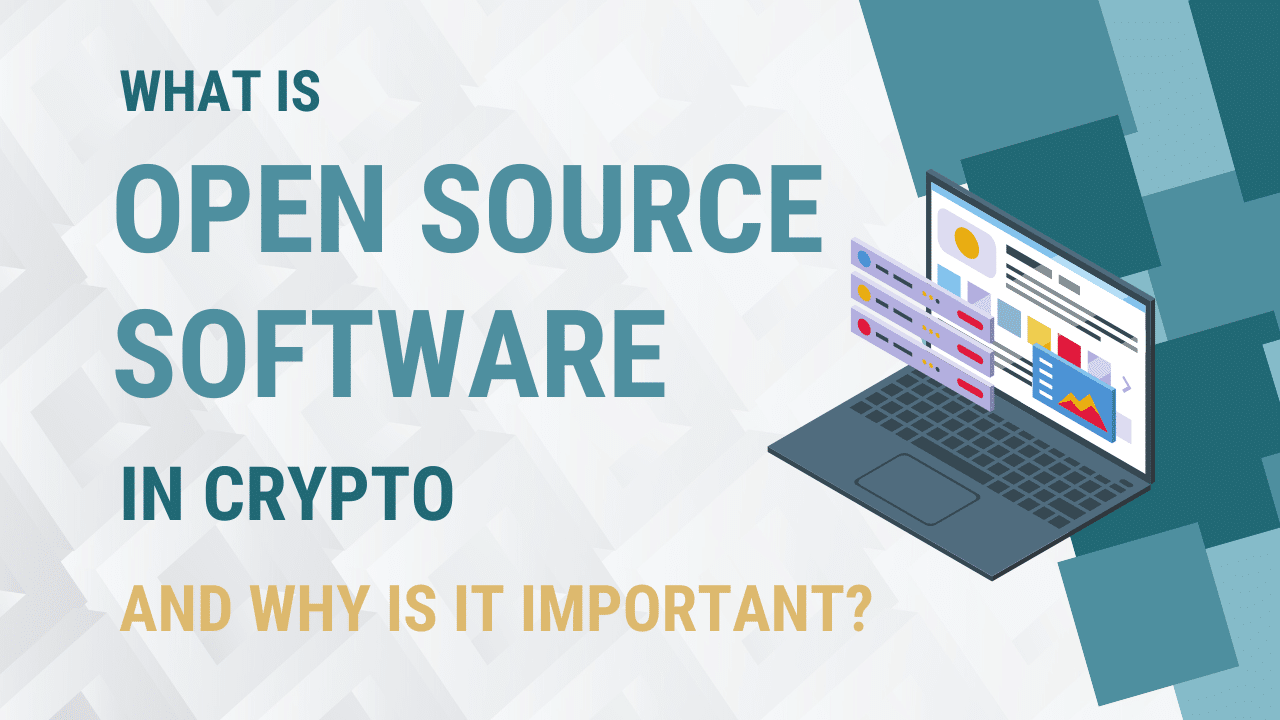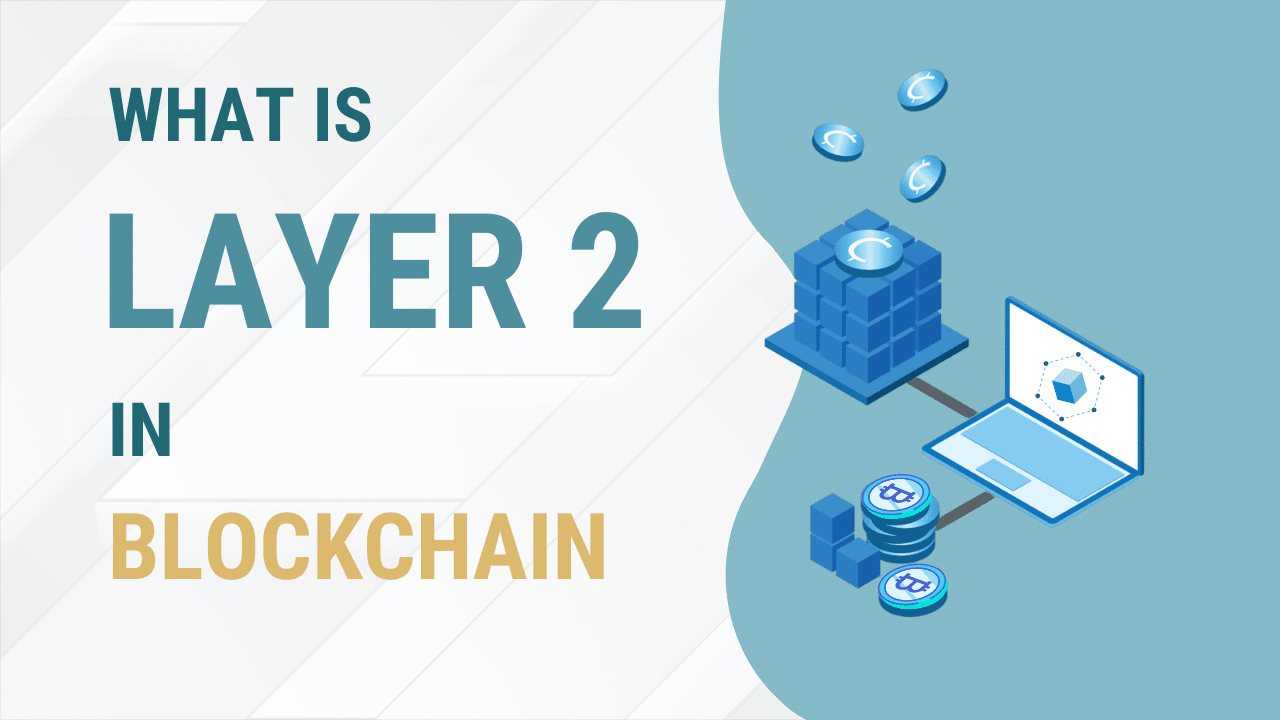Since the moment it was released, crypto and blockchain’s major selling point has been transparency. Any transactions made within a specific blockchain are free for the public to view, and this builds trust both within the community and between the community and the blockchain itself.
But how deep does this transparency run?
It’s common knowledge that any transactions that happen within a blockchain are recorded on a public ledger, making them both trackable and unchangeable. However, this process plays only a small part in maintaining that transparency.
Most cryptocurrencies (and the blockchains they are attached to) are built on open-source coding and software. In other words, no single developer owns the code in question and it is available online for anyone to view.
Keep reading to discover everything you need to know about open-source software and why it’s critical for building a trustworthy cryptocurrency system.

What Does Open Source Mean?
Open source is a term that basically means “available to the public.” For example, open-source code is code that is posted online and is free for anyone to use, view, or scrutinize for bugs. They can also suggest new features or changes to said code, or develop said features themselves and release them as a separate item.
When people talk about “open-source software” they are actually referring to the code that makes up the software. It is this code that is the backbone of many major cryptocurrencies, such as Ethereum, Bitcoin, and Cardano.
Actually, this sort of open-source code was around long before cryptocurrency was. The phrase as it refers to code was first used in the early 1990s, not long after the internet’s creation. It’s a good thing, too, because without open-source code at such an early point in the internet’s development, the web as we know it would not exist today. Open source allowed it to advance much quicker than it would have otherwise.
Today, much of what people experience on the internet is built using open-source code. For example, 37% of the websites we visit are built using Linux, an open-source operating system.
Why is Open-Source Code Critical for Building Reliable Cryptocurrency?
Because of the nature of open-source code, it only makes sense that would be critical in maintaining crypto decentralization. After all, decentralization is a word that, at its core, means the item or concept in question has no single owner or entity controlling it.
Cryptocurrency is decentralized because it isn’t controlled by financial organizations like banks or governing entities like the government. In the same way, open-source code has no single owner and can be used by anyone. It can be changed, scrutinized, and utilized as desired with little to no restrictions.
Because cryptocurrency’s core principle is decentralization, it makes sense that it would need a decentralized way to manage its code base. Not only does this build trust within the community and set crypto up to succeed, but it also makes it much easier to develop and improve the existing technology.

Furthermore, because most major cryptocurrencies are decentralized, they don’t have a single governing entity that can block certain transactions or suddenly make changes to the network. Users who purchase cryptocurrency have full control over it. They don’t have to rely on third parties to keep it safe and manage it, like with fiat currency and banks.
As such, cryptocurrencies like Bitcoin had to find a way to code its blockchain to remove unreliable third parties while maintaining trust. The code couldn’t have any one person or organization controlling it either, as this would mean that the entity could make changes at any time. So, open-source code was the best possible solution.
What are the Benefits of Using Open-Source Code?
Using open-source code to build cryptocurrency has many benefits:
- Anyone can use it: Since the code is public, anyone can download cryptocurrency software based on open-source code and run it without permission. No government or company intervention necessary!
- Allows for better security: Open-source code benefits those using the program more than anyone else. Since the code can be easily viewed, tested, and improved, the final result is a product that is more secure than the alternative.
- Encourages continuous innovation: Those who are interested in the project can review the code and make adjustments. They can then either take those adjustments and use them to create an entirely new project, or they can submit them as a proposed change to the original. Bitcoin, for example, uses BIPS to submit proposed changes.
- The code can be verified: When a single company controls all the code involved in a project, it’s easy for them to add features or additions they don’t tell consumers about. This can put your data at risk or cause unnecessary harm to your device.With open-source code, however, this isn’t a concern. Anyone can view the code, so other developers are able to examine and test the code, thereby verifying that it does (and only does) what it’s supposed to.
- Helps the crypto industry grow: As we mentioned earlier, open-source code makes it easy to take a set of code that one project uses and adapt it to fit your own needs. This leads to the creation of a totally separate project. This is how the crypto world grew so quickly. When Bitcoin was released, so was the source code used to create it. Other developers then took this code, made adjustments, and created new blockchains and cryptocurrencies to help the industry expand and give the public options.

How Does Open-Source Crypto Work?
Creating an open-source cryptocurrency is actually quite easy. To be considered open source, a cryptocurrency needs to have its code freely available for the public to view. Most popular cryptocurrencies today are open source.
Open-source cryptocurrencies have several advantages over their closed-source counterparts as well.
First, as we mentioned, open-source cryptocurrency can be audited at any point. If there’s a bug that allows your crypto, money, or data to be stolen, it will be found relatively quickly. This also prevents hackers from exploiting hidden bugs to gain control of a blockchain, thereby helping maintain its integrity.
This is crucial because a cryptocurrency’s success relies on the public being able to trust it. Not surprisingly, users tend to put more trust in a blockchain whose code is public. These codes are being continuously improved and are better than a private blockchain that few know the inner workings of.
Another advantageous aspect of open-source software is that it allows cryptocurrency to be forked. If there’s a major incident with a blockchain or the cryptocurrency it hosts, the base code can always be modified. It can then be re-released as a fork of the original project.
This actually happened with Ethereum in 2016. A hack was carried out on a third-party application operating on the Ethereum blockchain. This led to thousands of dollars worth of Ether being stolen. Ethereum developers were luckily able to reverse hack and return the stolen Ether. However, this did not stop the event from damaging the public’s trust.
Eventually, it was decided the Ethereum blockchain should undergo a hard fork and become an entirely new project. The original blockchain remained open and still operates today under Ethereum Classic. Without open-source code, though, we would likely no longer have access to Ethereum at all.

Where is This Software Used in Bitcoin and Ethereum?
We know that both Bitcoin and Ethereum are based on open-source code, but how was it first introduced to cryptocurrency? And how is it being used now?
Using open code in crypto actually began with the first cryptocurrency ever created: Bitcoin. When Bitcoin’s mysterious creator Satoshi Nakamoto first released version 0.1 of Bitcoin (now referred to as the Bitcoin Core) it was done by posting the code in an open-source forum on the internet.
Since Nakamoto released it, the Bitcoin core has grown into a magnificent beacon of technological change. Many developers around the world contribute to it full-time, and more than 100 people in total have submitted changes to the code. Many of these have been permanently added to the project.
More information on Bitcoin’s contribution history can be found on Github.com, where the Bitcoin Core was first published and the current open-source code is housed.
This base infrastructure formed from the original Bitcoin Core is now used in hundreds of major cryptocurrencies around the world. Most of these projects also publicly share their code.
Ethereum Software
Ethereum also supports its own ecosystem of open-source software. Ethereum’s developers actually took the decentralization mantra one step further and aim to decentralize the entire internet.
The team began to pursue this by running apps on top of the blockchain, creating a new class of applications called DApps (decentralized applications). This helped because, since most apps are run by larger parent companies like Twitter and Facebook, the Dapps allowed users to have more control over how their data is used.
For example, think about the sign-up process you go through every time you download a new app. You type in your username and password, and before you can do anything else, you have to accept the terms and conditions. If you don’t, you aren’t allowed to use it!
When decentralized apps, this isn’t the case. Instead of not being able to use the app if you don’t agree with certain aspects of it (or worse, having to just suffer through those aspects), you can take the code and develop a similar, better app.

Where Else is Open Source Used in Cryptocurrency?
With how integral open source is to cryptocurrency as a whole, it isn’t exactly shocking that it’s used across a wider variety of applications than just the base blockchain code. Perhaps the most popular, however, are open-source crypto wallets.
Open-Source Crypto Wallets
In the same way people need to be able to trust the blockchain their cryptocurrency runs on, people need to be able to trust their digital wallets. Without a secure method to store cryptocurrency, there’s no point in trading it. After all, should the wallet you’re using have a bug, you could end up losing some or all of your hard-earned crypto.
For this reason, many crypto wallets are open source. This way, developers or concerned crypto holders can examine the wallet’s code and catch issues before they arise. By calling attention to these issues and proposing solutions, users’ funds remain well-protected. Some open-source crypto wallets will even reward those who find bugs and alert the development team.
It is important to note, though, that there are many crypto wallets that aren’t open source. Some wallets are partially open and only publish a portion of their code to protect their intellectual property. Others are completely closed and don’t publish any part of their source code.
If you’re looking for an open-source crypto wallet for yourself, though, be sure to do plenty of research before making a final decision. Here are a few recommendations to get you started:
- Electrum
- Mycelium
- MyEtherwallet
- Metamask
- AlphaWallet
There are others, of course, so don’t get discouraged if these don’t suit you. Alternatively, you don’t need to choose an open-source wallet at all. It all depends on how you use and trade your cryptocurrency and what preferences you have.
Final Thoughts
Open-source software increases the transparency and decentralization of a cryptocurrency by allowing anyone to inspect the source code. Not only does this increase the public’s trust in crypto, but it also encourages constant innovation and curiosity.
If this article has sparked your curiosity and you want to learn more about cryptocurrency or decentralization, Dypto has you covered. Be sure to visit our graphic chapters for casual, structured lessons that walk you through the world of crypto. Or, you can learn at your own pace using our blog and Cryptionary features.
Whatever you decide to do, make sure you do your research and learn before you leap.
Dypto out!
Want to join the Dypto journey? Follow our socials!


